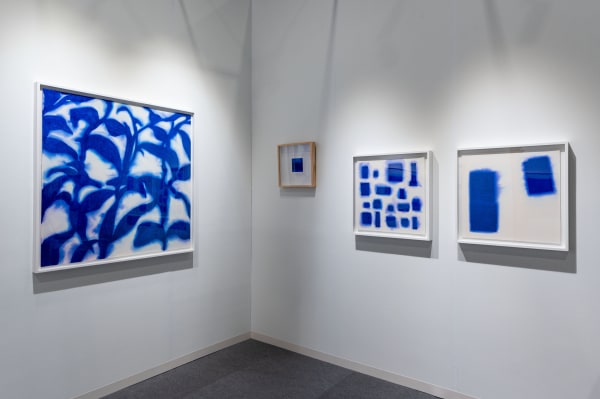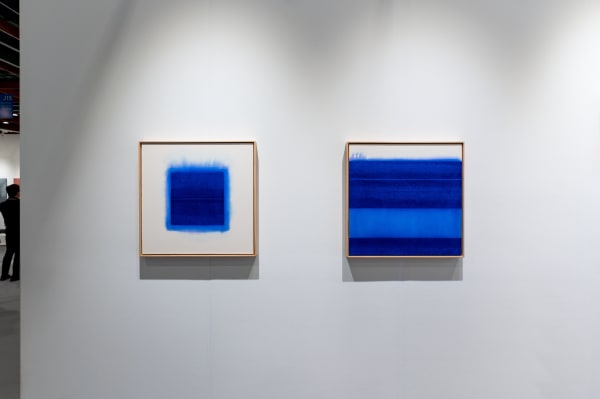Art Taipei 2023 - MIT新人推薦特區: 謝榕蔚
Past event
介紹
台北世界貿易中心展覽一館
Booth K07
非物之物––陰翳禮讚之後的殘存晦映
文/ 謝榕蔚
在⼈造光源讓陰翳無所遁形的現代,我相信陰翳美學和精神依然存在,只是它殘匿於吸睛奪⽬的燈光之中。隱匿的再映⾊光。因為⾁眼看不⾒光線,只能看⾒光源的物理限制,留給光線流動的空間以及流淌其中的光能不能算是創作的主體?還是因為看不⾒所以它只能依附在物質之後?我認為,這樣的「空」間中它無⽤置疑是「物」的⼀種,只是因為光的粒⼦過於微⼩,所以我們無法意識到它的存在。
在⽯上純也《Another Scale of Architecture》⼀書中提到「The expanse of an environment includes numerous invisible structures, extending far beyond spaces discernible in visible light. These invisible structures give the environment depth, a depth that extends to the furthest reaches of two extremes: the cosmic, and the subatomic.If we endeavor to deal with architecture and environment at the same level, perhaps we should design spaces of invisible dimensions just as we do those visible spaces.」
如果突破了⼈類尺度的限制,其實這些看不⾒的光⼦軌道,也可以像建築般被設計。⽽本次創作系列所做「物」的建構物,其實到頭來只是配合⼈⾝體的物理限制;為了證明光線的軌道讓⾊光有載體停留⽽最終被我們的⾁眼看⾒並證明其存在,這個「物」並不是唯⼀的重點,更⼤⼀部分的研究在於那些我們⾁眼不可⾒的光線軌道所形塑的空間範圍。⽽我研究的⽬的是為了⽤科學的⽅法分析它的物理原理,並嘗試製作讓這種陰翳晦映的⾊光能以現代化且以更純粹的形式再現。
如果突破了⼈類尺度的限制,其實這些看不⾒的光⼦軌道,也可以像建築般被設計。⽽本次創作系列所做「物」的建構物,其實到頭來只是配合⼈⾝體的物理限制;為了證明光線的軌道讓⾊光有載體停留⽽最終被我們的⾁眼看⾒並證明其存在,這個「物」並不是唯⼀的重點,更⼤⼀部分的研究在於那些我們⾁眼不可⾒的光線軌道所形塑的空間範圍。⽽我研究的⽬的是為了⽤科學的⽅法分析它的物理原理,並嘗試製作讓這種陰翳晦映的⾊光能以現代化且以更純粹的形式再現。
晦映⾊光的隱晦神秘來⾃於空間的「距離」,陰暗與明亮必須達到平衡,過之不及就會造成⾊光的消縱即逝,所以此距離必須恰到好處,光線才得以在包覆性的空間中無限反射流淌,形成均值的光。晦映⾊光不是強烈的能量感受,它比較接近溫和的覆蓋,就像東亞⽟器、瓷器那種溫潤的審美;也類似東亞具有神聖性的建築般,透過⾝體感官沉澱後所引發的內在⼼性能量。⾊光的撲朔迷離引領觀者從物質距離的留⽩進入⾃我⼼靈,物質世界的微弱反⽽製造強⼤的⼼理能量,觸動內在的精神,是因為「空」所以才有更多的餘裕把⾃⼰放入其中。我們的⾝體需要建築,或許我們的⼼靈也需要「空間」,我想以建築的⽅法設計出這個既存在⼜不存在的空間,就像是圍繞在⾊光系列作品周遭的光場般,當作品作為光線的定錨點,空間變豎立起無數道隱形的牆,⽽觀者移動的同時也穿越隱形的⾨,感受作品作為光線場載體的數值變化。我相信這個存在⼜不存在的空間,同時連通的是⼼靈空間,讓我們從精神上感受到能量。
展覽現場








